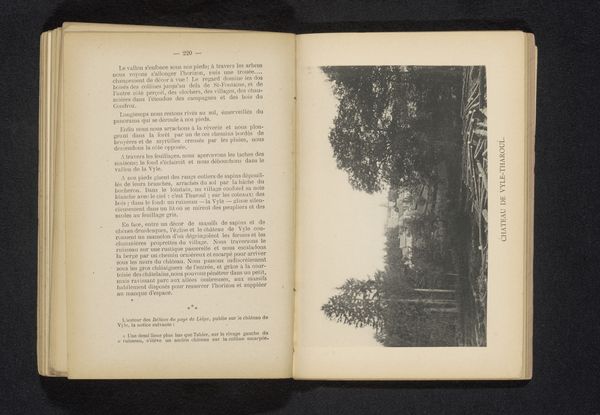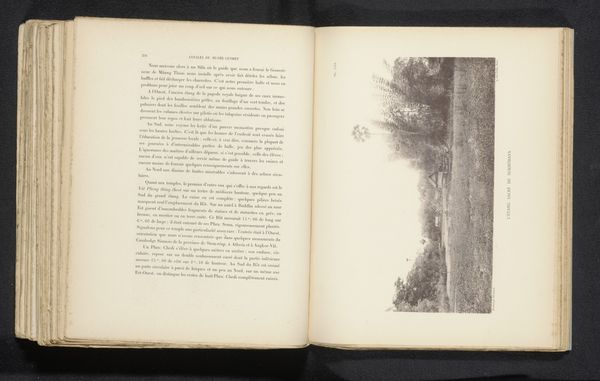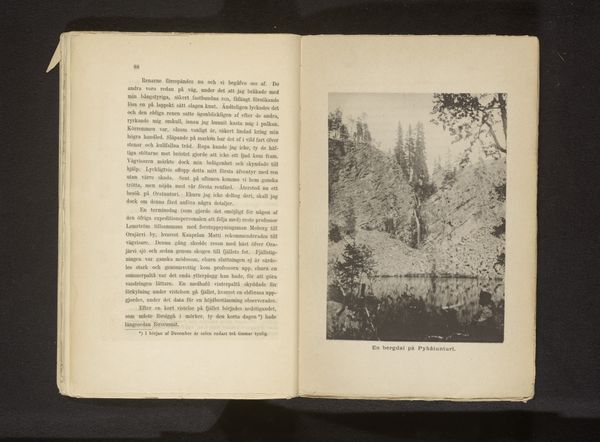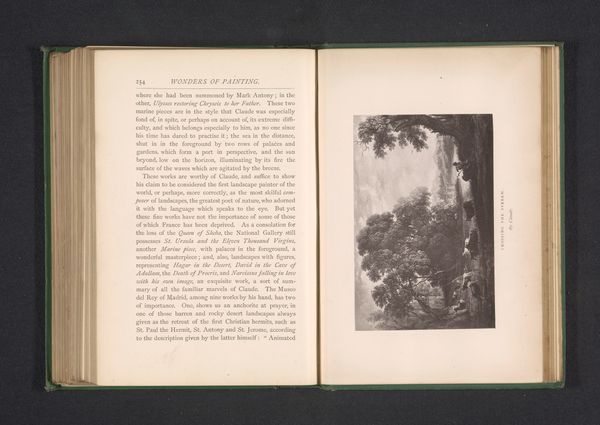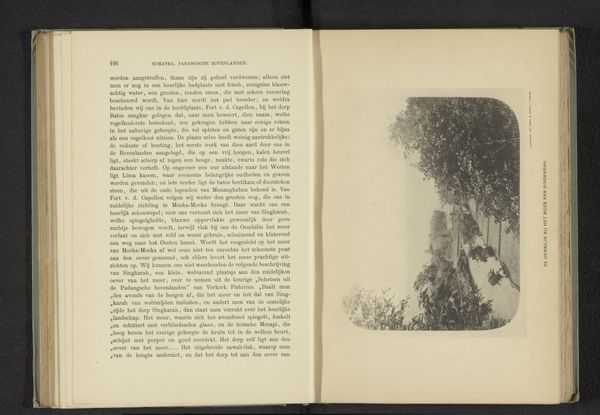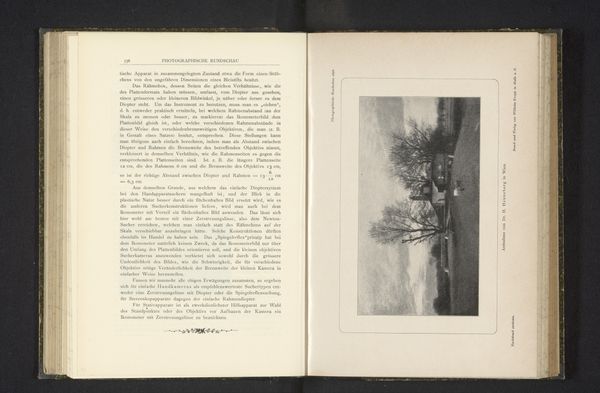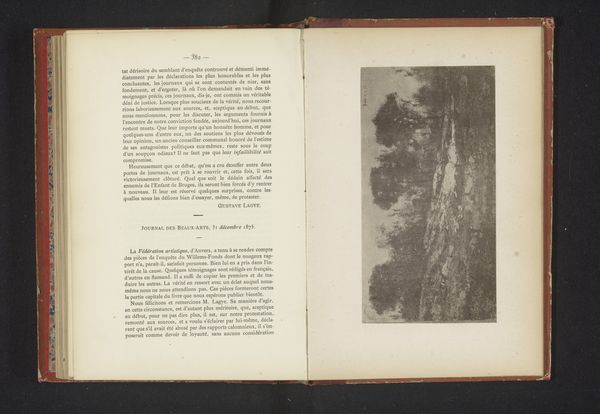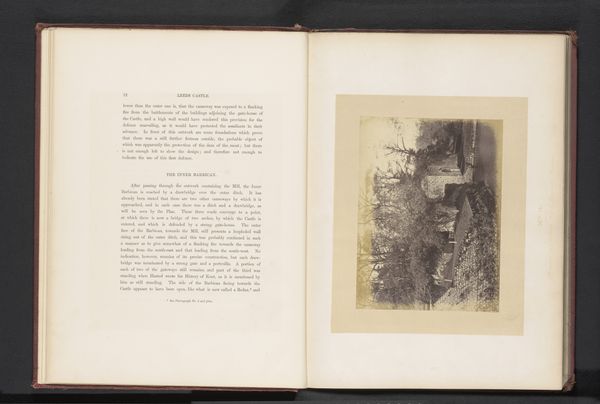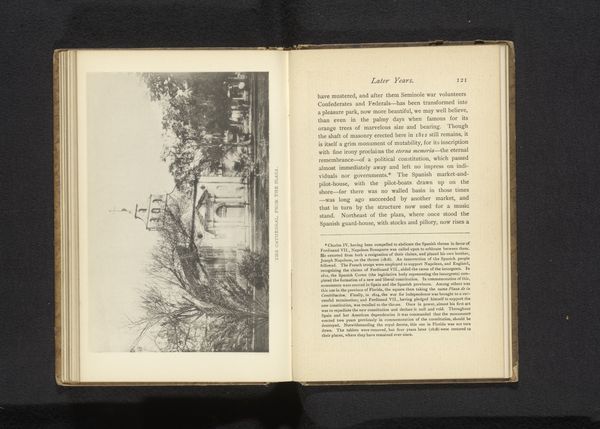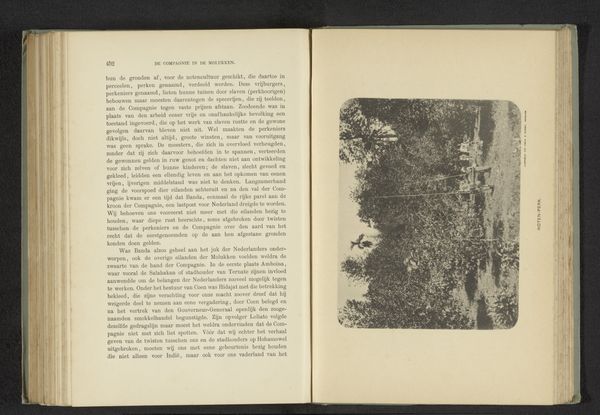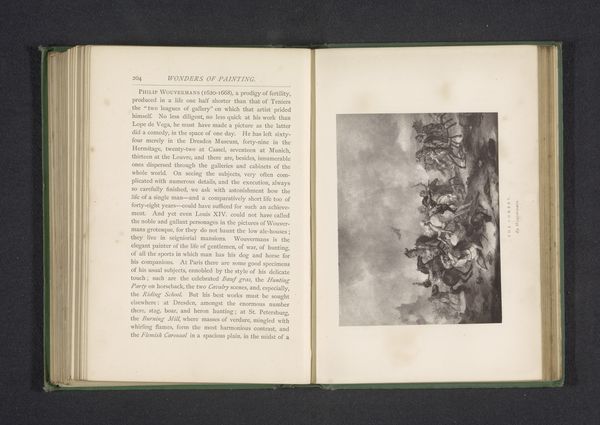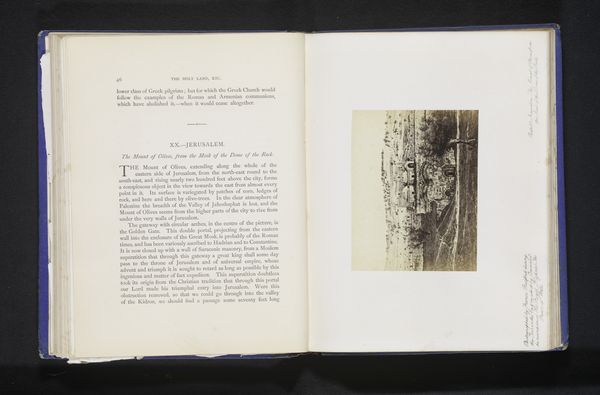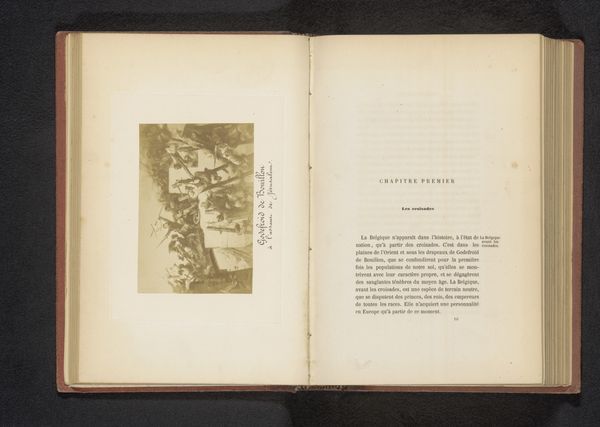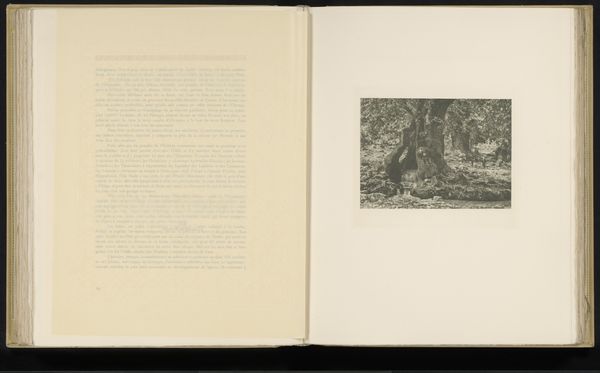
print, paper, photography
#
aged paper
#
homemade paper
#
paperlike
# print
#
sketch book
#
landscape
#
paper
#
photography
#
personal sketchbook
#
thick font
#
handwritten font
#
paper medium
#
historical font
#
columned text
Dimensions: height 147 mm, width 214 mm
Copyright: Rijks Museum: Open Domain
Curator: This captivating print, likely a page from a book or sketchbook, presents a rural scene entitled "Onbekende man met karren met buffels voor bomen", or "Unknown Man with Carts with Buffaloes Before Trees", dating back to before 1895, and created by Michel Berthaud. What's your immediate response to it? Editor: It evokes a real sense of quiet perseverance, a landscape touched by labor. The muted tones create an atmosphere of stillness, but also make me wonder about the conditions shaping this rural community. Curator: Absolutely. Seeing this piece as part of a larger sketchbook brings to light how such images circulated at the time. This visual representation reflects colonial observation and documentation during that period. It depicts how the lives of local individuals, possibly affected by resource extraction or other economic endeavors, became a matter of visual and textual records. Editor: Yes, there's an inescapable layer of potential exploitation here. Those buffalo pulling the carts – they’re not just picturesque, are they? What’s visible in their situation is a portrait of how people interacted with them at that time. It makes me want to know more about whose perspective dominated this image. Curator: A critical perspective is essential. Given the historical context of the late 19th century, it prompts reflection upon colonial projects. These images served particular social purposes that may have influenced public perceptions regarding labor and exploitation. The trees may be viewed as either natural resources being exploited, or sites impacted by industrial extraction activities prevalent in colonies during those years. Editor: It challenges us to look deeper, doesn’t it? The aged paper becomes almost a symbol of time's relentless march, but also reminds us of what stories may have been purposefully erased from these historical records. Perhaps those sketches offer hints of untold narratives. Curator: It makes me wonder what voices, viewpoints or narratives might be found via closer research into who these human subjects or their broader socio-historical surroundings may have comprised! Editor: The print definitely encourages reflection about how these artworks participated with, shaped, but moreover circulated throughout history at important formative times for social change agendas around identities associated by politics around power differentials.
Comments
No comments
Be the first to comment and join the conversation on the ultimate creative platform.
